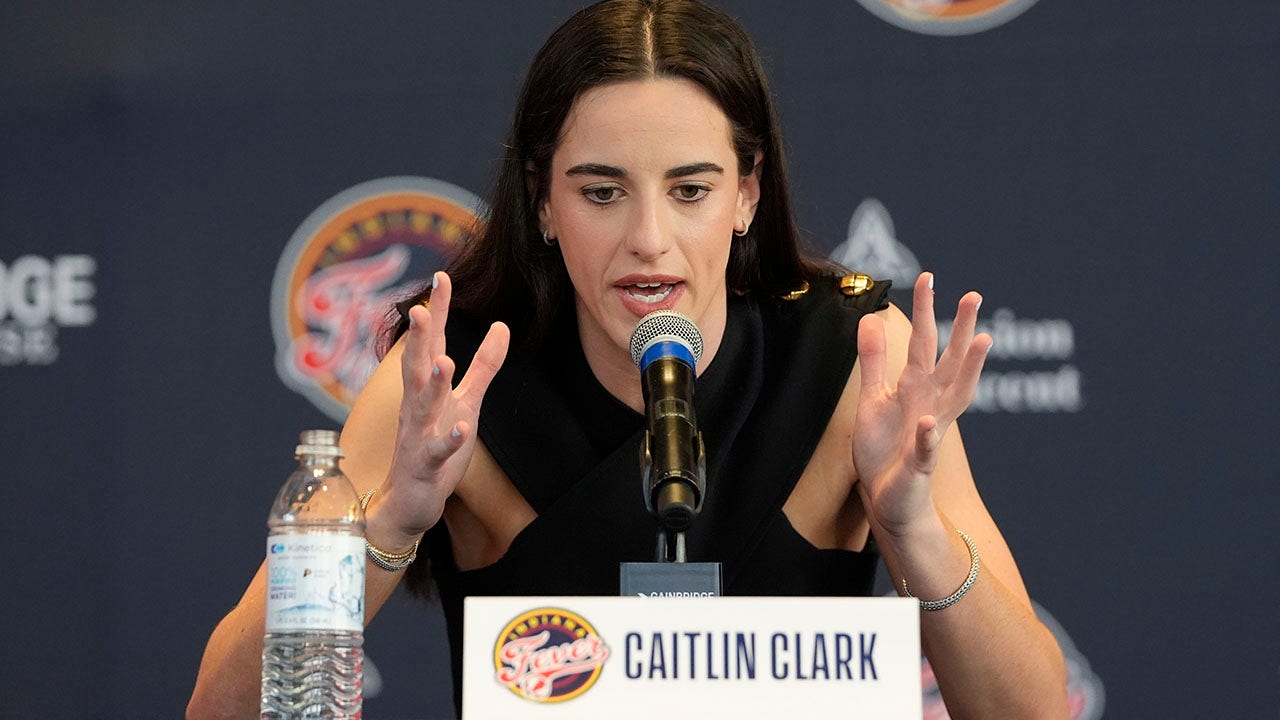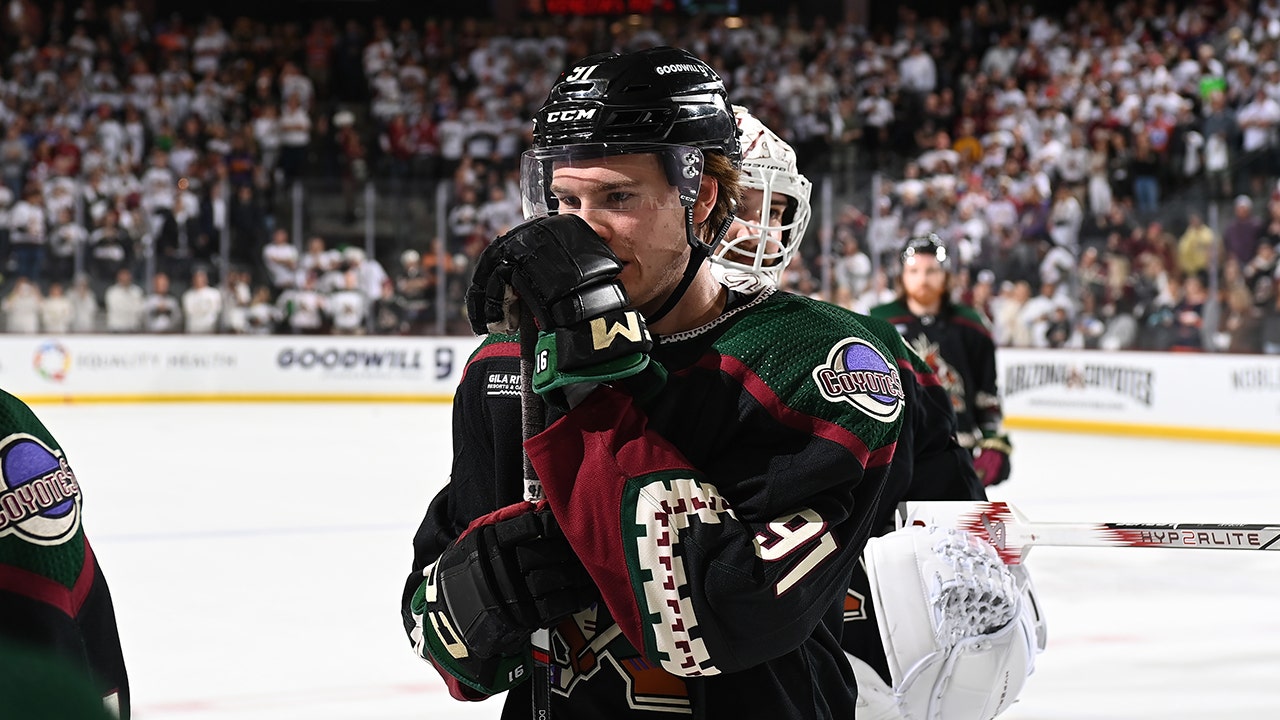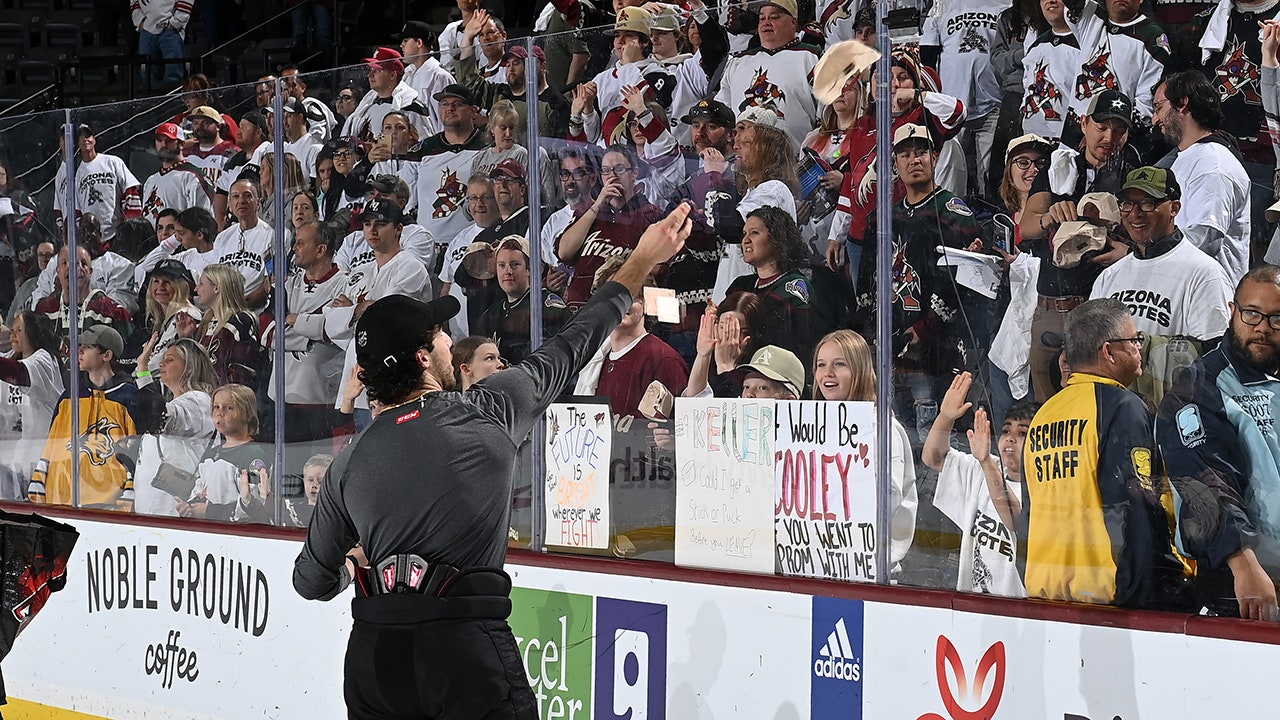Given how much went wrong in Game 5, the Warriors might almost consider themselves fortunate to have a 3-2 lead in the Finals. After dominating third quarters in this series (and for the last eight years), Golden State got blitzed by the Celtics in the third on Monday; Robert Williams controlled the paint defensively while both of Golden State’s big men battled foul trouble, to the point that 38-year-old Andre Iguodala logged four minutes at center; Jayson Tatum had one of his better scoring games of the series even against excellent defense; the Warriors attempted 42 percent of their shots from 3 and made just 21 percent of them; and Steph Curry, on the heels of a 43-point outburst in Game 4, scored just 16 points on 22 shots while failing to make a 3-pointer for the first time in his playoff career.
Yet somehow, there was Curry on the bench as the game’s final seconds ticked away, laughing off a cold-shooting line as the Warriors closed out a comfortable win.

The Celtics changed their defense on Steph Curry and Andrew Wiggins stepped up
Curry and Boston’s defense have brought the best out of one another in these Finals, each continually raising their level of play to overcome the other’s dominance. Boston used a relatively conservative approach on Curry through the first four games of the series (though a conservative scheme against Curry amounts to what most players would consider the kitchen sink), staying in a drop pick-and-roll coverage that forced Curry to live off of difficult pull-up 3s and allowed the Celtics to stifle Golden State’s free-flowing offense. On Monday, Boston finally resorted to blitzing Curry in pick-and-roll, forcing the ball out of his hands and daring the other Warriors, who have struggled on offense in the series, to beat them.
Those other Warriors, clearly, were up to the challenge. Curry had his worst shooting game of the playoffs, but the attention he commanded from the defense unlocked Golden State’s offense in a way it hadn’t been before Game 5. Curry finished with a series-high eight assists while Draymond Green notched his second-highest scoring total of the series and Klay Thompson broke loose for his best all-around game of the postseason. Jordan Poole had 14 points in 14 minutes and Gary Payton II scooped up six easy baskets simply by playing within the offense.
Most central among Golden State’s supporting cast, however, was Andrew Wiggins, whose transformation into an invaluable two-way wing culminated in the best game of his career on Monday night. Despite struggling from beyond the arc, Wiggins finished with an efficient 26 points and 13 rebounds in Game 5, but more impactful than his statistical line was the balance and assertiveness with which he played on both ends.
https://www.reddit.com/r/nbafinalsgame6onabc/
https://www.reddit.com/r/nbafinalsonabc2022/
https://www.reddit.com/r/celticsvswarriors06/
https://www.reddit.com/r/nbafinals2k22onabc/
Wiggins decisively attacked the gaps Curry created, displaying a keen sense of when he could get to his spots and when to keep the ball moving. He took the shots that were given to him, but more often he leveraged them into even better looks. Defensively, he served as Tatum’s primary defender, as he as all series, and Tatum couldn’t generate so much as a clean look against Wiggins over the game’s final 15 minutes (in fairness, Tatum also looked exhausted down the stretch):
Wiggins was heavily — and fairly — criticized early in his career for his shot selection, defensive apathy and poor feel for the game, but he deserves equally vociferous praise for the way he’s transformed himself into a vital two-way component of a potential NBA champion. When he arrived in Golden State two seasons ago, the idea of an athletic wing in his mid-20s who could space the floor, defend on the perimeter and convert easy looks around the rim was precisely what the Warriors needed.
But for the first year of his tenure, Wiggins was an inconsistent, often indifferent defender who struggled to grasp the improvisational concepts of Golden State’s instinctive, movement-heavy offense. He’d smack directly into ball screens, get chewed out by Green for missed rotations and miss easy passes or screens that could set up Curry 3s.
Those reads come more naturally now, and Wiggins has found a better balance between hunting his own shot and staying within the flow of the offense. Rather than forcing jumpers when his initial look fails, Wiggins has learned to move the ball, look for shooters and make himself an option without the ball:
In many ways, these Warriors resemble the Beautiful Game Spurs teams of the mid-2010s, and there are shades of a young Kawhi Leonard in the way Wiggins has defended opposing stars, relentlessly crashed the boards and found points within the offensive flow throughout the playoffs. He isn’t the same defender even that burgeoning version of Kawhi was, nor is he on the same developmental track (Wiggins is four years older than Leonard was in 2014).
Yet he plays a similar role as an athletic cog on an experienced, veteran team who can guard multiple positions and generate offense in a pinch. Wiggins is one of the Warriors’ few reliable on-ball creators, and in Game 5 he used his ball-handling and touch around the rim to attack off the dribble while Curry occupied the bulk of the Celtics’ attention. The mid-range pull-ups that dragged down his value in Minnesota now serve as needed backup options when Golden State’s offense stalls out:
We might see Boston go back to a more traditional approach on Curry in Game 6, which would likely shrink the openings Wiggins has to attack. Even as Curry has lit the Celtics up in pick-and-roll, Golden State’s halfcourt offense has still struggled with so much action flowing directly through one player. That isn’t the Warriors’ preferred style, and forcing them into that approach allows Boston to play more on its terms.
There are no right answers against Curry, who has solved, to some degree, everything the Celtics have shown him, and the Warriors’ offensive diversity is partially why they’ve looked more comfortable as the series has progressed while Boston looks increasingly shaky. This series has featured two exceedingly resilient teams weathering runs and absorbing punches, both game-to-game and quarter-to-quarter. The Celtics, who have thrived facing elimination this postseason, are now left with no choice but to bounce back once again.
More takeaways from Game 5 of the NBA Finals
Turnovers & transition
We suspected coming into the Finals that whichever team controlled the ball would control the series, and that has proven true through five games. Through four games, Boston committed 60 turnovers to Golden State’s 59, with 13 more live-ball turnovers than the Warriors. On Monday, the Celtics coughed the ball up 18 more times, including nine live-ball, while Golden State gave it up just six times (two live-ball). That helped the Warriors carve out an edge in transition, where they have a decided advantage in the series. The two teams have almost identical offensive ratings in halfcourt possessions, but Golden State has scored almost four additional points per 100 possessions in transition this series, per Cleaning the Glass.
Much of the discourse around Boston’s postseason turnover issues focus on Brown, Tatum and Marcus Smart’s sloppiness with the ball, and while they have been careless at times, that framing doesn’t pay enough attention to Golden State and Miami’s defensive activity. The Warriors don’t pressure the ball or deny passing lanes like the Heat did, but their help defense and rotations are second-to-none in the NBA, and have coaxed difficult passes and thorny forays into the paint.
Curry is a thief in passing lanes, Thompson has ratcheted up his defensive activity in the last two games, and Green and Payton II have some of the best hands in the NBA. The foursome of Green, Payton, Wiggins and Kevon Looney is a hellacious unit to go up against without a surgical primary ball-handler.
That should keep Payton II — who played a playoff career-high 26 minutes in Game 5 — firmly in the rotation for as long as the series goes. His defensive playmaking in Game 5 disrupted Boston’s offense and sparked transition opportunities for the Warriors, and Payton’s length and strength give Kerr another semi-viable option on Brown and Tatum.
He also screens, moves the ball and puts pressure on the rim on offense, which makes the Warriors more dynamic than when Iguodala or Otto Porter Jr. is on the floor. Payton’s tiptoe baseline cut behind Smart was a prime example of how he can find random points over the course of a game:
Draymond, reinvigorated
Game 5 might have been Green’s best offensive showing of the series, which is why the Celtics might be wise to go back to playing Curry more conventionally in Game 6. Particularly in the first quarter, Green was aggressive getting downhill when Boston sold out on Curry and Thompson, which opened up not only his own scoring chances but easy looks for others:
Green also set a frenetic defensive tone for the Warriors, who were on a string for roughly the first 20 minutes of the game. That said, the Golden State could still be more disciplined against Boston’s playmakers. Wiggins gifted Boston six points by going under a pair of screens against Tatum in Game 5, and the Warriors could probably stand to close out under control against Smart and make him shoot over a contest instead of running him off the line and putting themselves into rotation.
With the exception of Green, Golden State’s defenders have also been too willing to let Brown get to his right hand. Many of Boston’s halfcourt sets are designed to get Brown attacking right, but when he’s on an island, the Warriors can be more disciplined about forcing him to his weaker side. Tatum is a better driver going right and a better shooter going left, making him harder to shade in either direction, but he has struggled mightily on left-handed drives. Golden State might be wise to either sit on his right side and crowd his space, or take away his left hand, give more of a cushion and live with left-to-right stepbacks.
Smart post play
Boston generated good looks by posting Smart against Poole, and it’s a good bet that they’ll go back to that in Game 6. Golden State has been reluctant to switch the defensively-challenged Poole onto Tatum or Brown, so the supersized Celtics decided to go at him with Smart, who can use his strength to bully Poole for layups or his passing to make plays when the Warriors bring help:
The strain that put on Golden State’s defense helped unlock Boston’s drive-and-kick offense, but the Warriors put the clamps back on when Poole checked out of the game. Smart’s physicality has spurred Boston’s offense at times in this series, but he hasn’t been able to consistently impose his will in the paint because of how well Green and Looney rotate. The Celtics scored a dismal 80 points per 100 halfcourt possessions in Game 5, and have only scored 94.3 per 100 in the halfcourt this series — slightly better than Cleveland’s 20th-ranked mark in the regular season. Playing through the post isn’t a panacea to those issues, but it might help open things up for Boston.
Depth disparity
Golden State’s depth advantage is starting to show as this grueling series wears on. Depending on whether Grant Williams and Payton Pritchard are playing well, Udoka has between six and eight reliable players available, and with Robert Williams clearly limited by a knee injury and Al Horford limited by being 36 years old, Tatum and Brown each played 44 minutes on Monday night, including the entire fourth quarter. That may be fine with so few games left in the season, but both showed signs of fatigue down the stretch of the last two contests.
Dialing up Derrick White’s minutes could help alleviate that issue, and Boston will probably lean more on him anyway. Udoka wisely stole some extra rest for Tatum in the first quarter on Monday, and should look to do the same in the third or fourth quarters going forward. (Curry may have also been slightly worn down in Game 5; he missed most of his 3s off the front rim.)
But the Warriors, who have nine or 10 serviceable bodies, clearly have both the best player and the deeper team in this series. The longer it goes, the more that should work in their favor.




